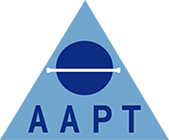News
Lydia Ridler achieves the RSciTech award
Lydia spoke to the AAPT about her RSciTech achievement and future CPD recording plans
What motivated you to pursue RSciTech registration through AAPT’s shortened route?
I was motivated to pursue the RSciTech shortened route as being registered with The Science Council is now a requirement for the Level 4 diploma, making it an essential part of professional development as an APT. Moreover, it helps in legitimise and regulate the role of an APT.
What key steps did you take to compile your application portfolio?
Whilst completing my Level 3 diploma, I kept a CPD log. I ensured that I was logging at least 1-2 entries per week which included online teaching days, portfolio work and my day-to-day work in the mortuary. This meant I had over one years' worth of CPD by the time I completed my EPA. Whilst awaiting my certificate, I completed the competencies that were necessary for my RSciTech shortened route application using online resources to help structure my answers. This allowed me to gain registration the month following receiving my certificate.
How did AAPT support you during the application process?
The AAPT online resources for the RSciTech shortened route proved to be extremely helpful when completing my competencies. It gave me a clear idea of what the assessors were looking for and how best to structure my answers. I also attended the RSciTech masterclass which gave me further insight and clarity on what a successful application should look like.
What advice would you give to others considering the shortened route?
For those currently completing their level 3 who are interested in registration, my biggest piece of advice is to complete your CPD log alongside your Level 3 as completing your portfolio, sitting exams and attending online teaching/revision days make great pieces of CPD evidence. It also means you can use this time to work towards two separate goals. Another piece of advice would be to utilise the time between your EPA and receiving your certificate to complete your competencies, again this expedites the process and means you are achieving two goals within the same timeframe. Having seen the full list of competencies versus the shortened route competencies, it is definitely worth taking advantage of the shortened route whilst you can in the two years' post-qualification timeframe as it will save a lot of time!
How do you plan to maintain your RSciTech status and continue developing professionally?
I plan to maintain my RSciTech status by using CPDme to log my CPD activities going forward. This is also a great motivator to be more involved in the field and broaden your skillset whether that be by training others, attending training courses yourself or otherwise participating in and seeking out experiences that will improve your knowledge and diversify your skillset.
I demonstrated the required competencies using examples from my day-to-day work within the mortuary. These included attending meetings, responsibilities such as formalin monitoring, conducting post-mortem examinations and problem-solving, both within my role and as a team. Most of these were taken from my CPD log and elaborated on in order to meet the requirements of the competency. I structured my answers based on examples of well-written competencies that can be found on the AAPT website and the Science Council website.
Did the RSciTech registration validate your skills in a way that prior qualifications or roles did not?
I think that RSciTech registration has helped to further validate my skillset as it demonstrates commitment to the role and adherence to professional standards.
What resources or tools from AAPT were most valuable for your application?
Examples of good competencies which can be found on both the AAPT website and the Science Council website helped me immensely in structuring my answers in a way that ensured the competency was met. The RSciTech masterclass also provided valuable insight into what assessors are looking for in applications and how to ensure your application is successful.
